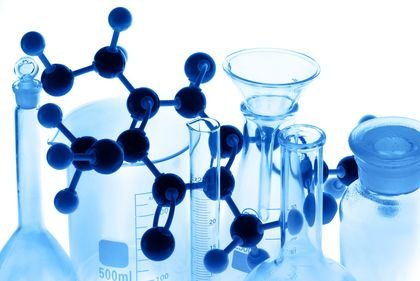Protect Yourself: Plastics and Chemicals in the Home
Hey There,
Here's a small article I put together about some pretty common items. Plastics and chemicals.
We know and use them everyday and they are everywhere in our modern world. Some we can live with and some we should probably do without. In my opinion Bisphenol A is one of most hidden and looked over harmful chemicals in our homes today. There are countless of studies showing that this chemical is the cause of some fairly harmful results. Here is some information to better protect yourself and your home from Bisphenol A (BPA).
A Brief Background

Bisphenol A (BPA) is an industrial chemical used primarily to make a polycarbonate plastic and epoxy resins. It is used around the world in countless items from plastic containers, food canning and even receipt paper ink.
How Your Body Works With It
Now here’s the interesting part, it has been suggested that BPA’s are broken down into glucuronide once it is ingested. (glucuronide is a harmless compound that body treats as waste) It’s then excreted by the kidneys. In my opinion this is already bad news because overworking of any internal system including your kidneys can potentially lead to dysfunction later.
That’s not all, the Centers for Disease Control (CDC) performed a huge collection of urine data in 2004.
(Man that must have been one heck of a job!)
They found small amounts of BPA in nearly all of the samples. (Remember BPA’s are actually supposed to be glucuronide coming out.) In addition to the BPA, the CDC found only trace amounts of the glucuronide. This means that the human body is not breaking down all of the BPA’s it absorbs from ingestion.
That'll make your hair stand up!
This Stuff is Everywhere
Now this is a bit scary, BPA’s are regularly used in baby bottles. Most parents will place formula or breast milk in a polycarbonate plastic bottle and heat it up until it is warm enough for the baby to drink. “There have been numerous test that show BPA leaches out faster when plastic is heated and then allowed to cool.” *Scott Belcher, endocrine biologist at the University of Cincinnati. http://www.fda.gov/NewsEvents/PublicHealthFocus/ucm064437.htm
Since the 1930’s it has been known that BPA acts like the hormone estrogen and will act in the body the same way. Research has also shown that the compound can promote breast cancer growth, decrease sperm count in rats, cause obesity and countless more health issues. This all raises questions about the potential health risks of BPA in the products we purchase and use.
Data from the CDC shows that up to 93% of a test group consisting of 2,157 people between the ages of 6 years old to 86 years old all had detectable levels of BPA’s in their urine. This is 10 times the acceptable limit set by the EPA. http://www.niehs.nih.gov/health/topics/agents/sya-bpa/
Here’s the wierd part. The Food and Drug Administration (FDA) and the Environmental Protection Agency (EPA) don’t consider this any reason for concern. The National Institutes of Health (NIH) and CDC agree that the use of BPA’s must be limited and reduced but can not come to an agreement on the amount of reduction. Meanwhile other nations such as Japan, Canada and the European Union have both banned the use of BPA’s in all food containers for humans.
Protect Yourself
How does this relate to overall home health? Most homes use plastic containers for organizational needs, food and cleaning products. The majority of these containers are treated with BPA. Once this chemical is in your home it is then easily inhaled, ingested and can even be absorbed through the skin the with casual contact. BPA’s are also retained by other organisms in the home, like molds and bacteria adding to the likelihood of developing health issues. Plus, when BPA’s are combined with other chemicals in the home antibacterial cleaners, can have cumulative effect on the human body potentially leading to it being stored in fatty tissues causing potential health issues in the future.
Your best course of action, dispose of all items that have BPA resin in it.
Best Actions Quick List:
- Store items like foods, liquids and cleaners in glass, cardboard or plastic containers that are not treated with BPA’s.
- Use some alternative types of plastics like polyethylene and polypropylene. They have no amounts of BPA’s and look and feel the same. Most of these alternative items are labeled or marked as “BPA Free” plastics.
- Keep an eye out for any container that is clear or colored usually identified with an arrow triangle and a “7” in the center. These container will have BPA resin and you are at risk.
REMEMBER: If you must use clear plastic bottles or BPA treated items never use them in the microwave or place hot liquids or food in them. Remember to wear gloves while washing them in hot water by hand.
SMILE!
That’s all for now. Please comment your thoughts on this post and STAY SAFE EVERYONE!
Very informative. I've recently stopped drinking from plastic water bottles for this very reason. Unfortunately this stuff is everywhere and so hard to stay away from :-/
Exactly, in 2004 the CDC discovered detectable levels of BPA's in 93% of the people tested.
http://www.niehs.nih.gov/health/topics/agents/sya-bpa/
It spans across all aisles of the store.